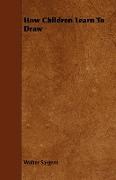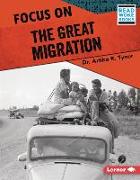How Children Learn to Draw
BücherAngebote / Angebote:
PREFACE Some of the recent helpful contributions to the subject of teaching drawing have been in the form of theories as to what ought to be accomplished.0thers have been in the form of descriptions of the devices and methods employed in various places. This book brings both of these point, s of view into close relationship, not only by presenting them together in the same voIume but also by recording the particular classroom experiences which formed the basis for the theory given and which in turn have been modified by that theory. It seemed to us that the concreteness of a detailed description of the experiments and theory of one school would compensate for the necessary limitations of such a treatment. We hope that the reault, s are representatmive enough to justify us in having given to the description of the work of a single institution a name so broad in its significance as the title of this book. Our sincere thanks are due to the instructors in the Elementary School whose cooperation made possible the close relation of drawing with the other subjects, and also to Mr. Harry Orrin Gillet, principal of the Elementnry School, for his concurrent efforts and for his helpful suggestions rgarding the manuscript. The methods of teaching drawing in the Elementary School of the School of Edcation in The University of. Chicago during the past few years have been in the nature of an expelinent to discover how children learn most readily to use drawing as a means of self-expression. Two uses of drawing have been emphasiased first, its use as a means of intellectual expression which differs essentially from verbal language and therefore offers a unique method of analyzing and dealing with subjects and showing them in a new light second, its use as a form of artistic expression, a means of developing artistic appreciation, and an avenue to the sources of enjoyment. Any means that appear ultimately to promote appreciation and ability in self-expression have been given fair trial, however questionable from the traditional artistic standpoint they may appear at first sight. For example, in building up a vocabulary of forms, direct observation has been supplemented by some copying and occasionally even by tracing. As high a class average has been expected in drawing as in any other subject. Methods as systematic as those in other subjects have been employed, and unpromising beginnings, even in the upper grades, have not been regarded as reasons for discouragement. Special talent in art has received the same consideration as does special talent in mathematics or in language. Daily records of each step followed in dealing with various topics have been kept, in order that from time to time the work of the children may be studied and modified in the light of all the details of procedure. This book presents some of these records, selected to show representative series of lessons, accompanied by explanatory notes and illustrations from the work of the children. This description of class room method is followed by a statement of the conclusions reached as a result of that experiment, in the form of a theory as to how children learn to draw.......
Folgt in ca. 10 Arbeitstagen

